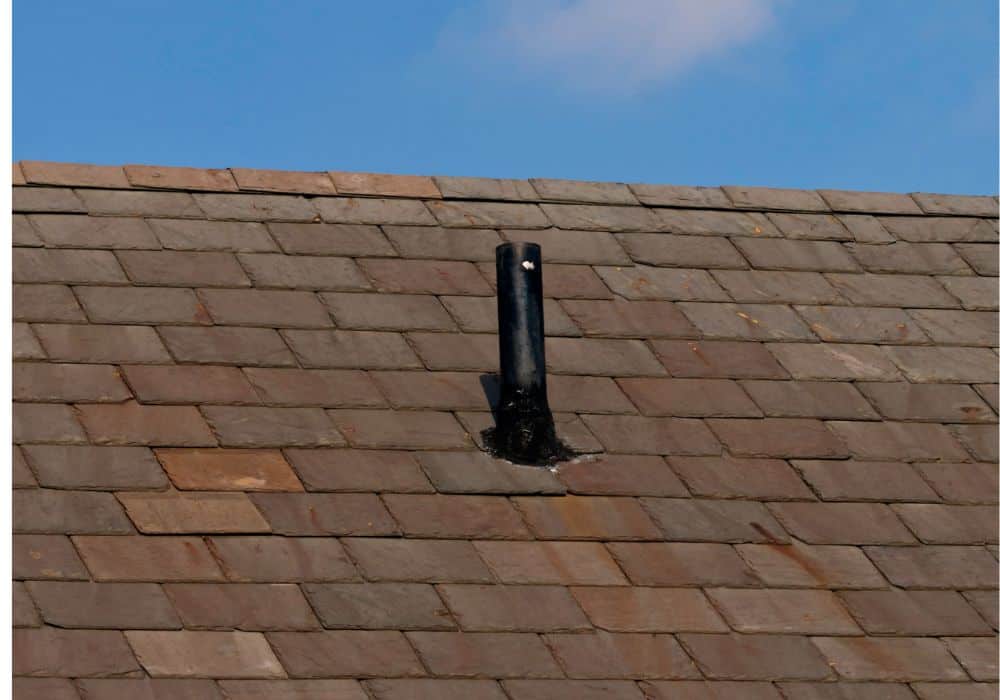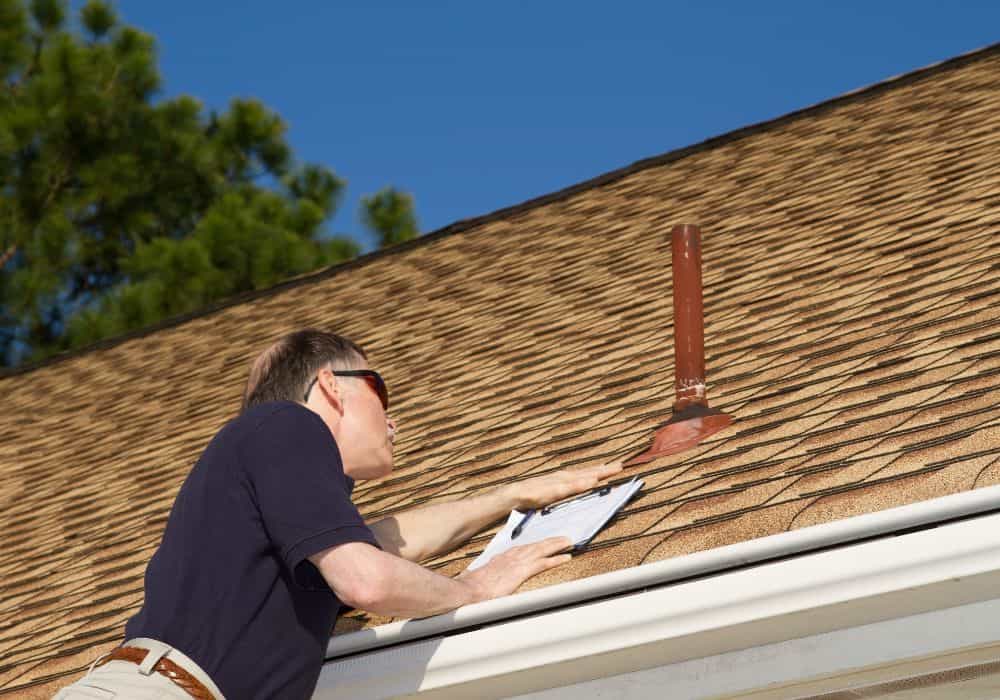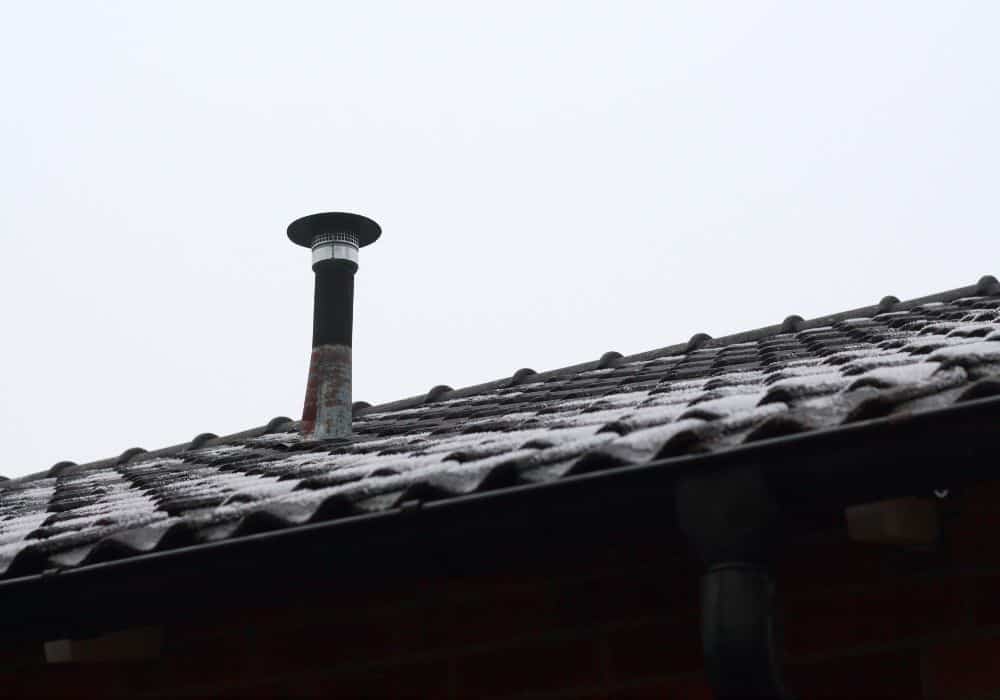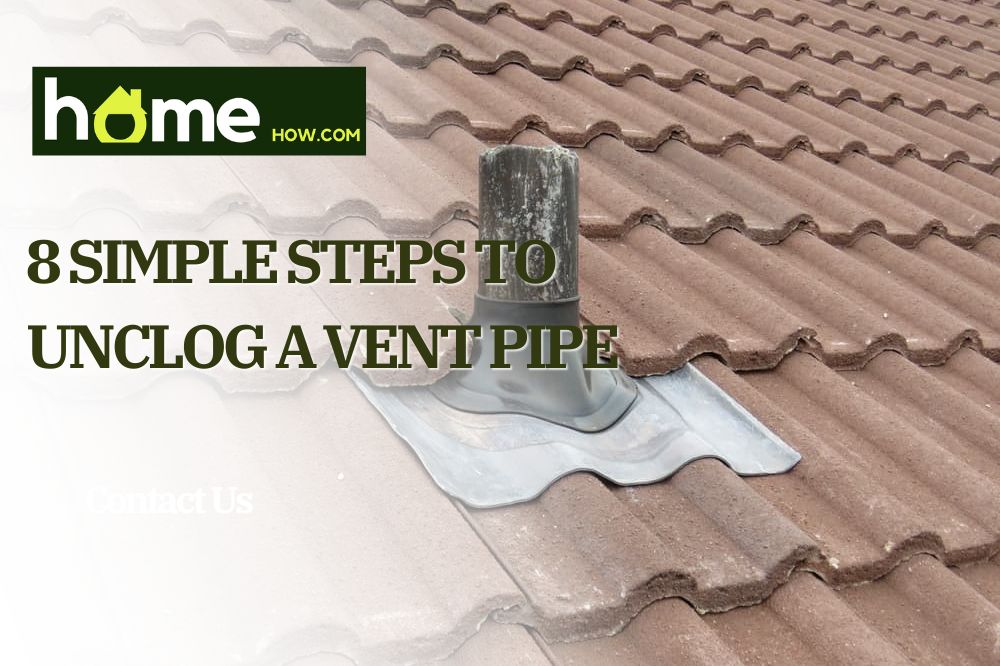Vent pipes are one of the essential pipes to our plumbing system, helping to remove gas and foul odors from inside our home, as well as wastewater and sewage, safely and securely to the sewer line. Vent pipes also ensure that atmospheric pressure is optimal throughout your waste system.
As useful as a vent pipe is, when it becomes blocked, it becomes one of your worst nightmares. No doubt there’s a bad smell running through your house, or you’re hearing gurgling or bubbling in toilets and sinks.
Today, we will go through just how easy it can be for you to diagnose and unclog your vent pipe by yourself. We’ll also highlight what plumbing equipment you need and how to keep you as safe as possible when working on your roof.
Equipment Needed
- Safety equipment, including rubber gloves, eyewear, and roof harness
- Secure ladder
- A snake drain with a camera and flashlight is highly recommended
- Auger or hydro jetter, depending on the blockage
- Another person nearby to help with testing the plumbing system throughout the process
Step-by-step on how to unclog a vent pipe
1. Diagnosing the problem
Because our plumbing system is so interconnected, it is crucial to identify where the clog is to concentrate your efforts effectively. You don’t want to unplug tricky pipes from your roof only to discover they weren’t the problem.
So how can you tell that your vent pipe is the issue? Consider the following three symptoms of a clogged vent pipe:
- Smell: A blocked vent pipe’s most obvious symptom is the smell. A clog creates a vacuum, which sucks sewer gases that the vent pipe usually omits back into your system and through your plumbing network.
- Gurgling: Whether it’s your toilet or sink, gurgling sounds around your home can signify that air is trapped in your system, most likely as it approaches your vent pipe.
- More than one pipe slow: If various drains in your home are slowly draining, this can also point towards the vent pipe as the culprit because the pressure across your system is out of balance. If only one drain is slow, it is likely just that pipe that’s clogged.
2. Secure your workspace
More often than not, unclogging your vent pipe will mean you travel to the roof of your home and work from the top down. You must secure your roof and ensure it can support your weight and any tools you use. Consider a harness if your roof is very high off the ground. Always ensure your ladder is secured in place, too.
Wear rubber gloves and protective eyewear to shield yourself from hazardous waste material that may spray upwards during the unclogging process.
A simple, but often overlooked tip, is to pick a day with calm weather. Adverse conditions like wind or rain can impede your work.
3. Drain snake with a camera
Take off any top or hood of your vent pipe. Grab your snake drain and gently feed it down your vent pipe. We recommend using a snake drain with a camera and flashlight, as this can give you insight into what type of blockage you are facing and the overall condition of your pipes.
For example, seeing tree roots penetrate the pipe can permanently damage the structure. Additionally, a camera view can help you see if the clog is specifically in the vent pipe or somewhere else in the plumbing network.

4. Break down the clog
If you’ve found debris in the pipe’s vertical section, it’s time to unclog it. Gently feed a water hose down the vent pipe, and turn it on. Try to maintain enough water pressure to wash away loose debris lying on the clog, e.g., grease, oil, tissue, etc.
If your clog is mainly made up of leaves, bird’s nests, or tree branches, the water might be enough to shift the clog and solve your vent pipe’s problems. If this is the case, install a vent cap.
5. Auger or jet
If the clog is made up of more challenging material that won’t shift with water pressure, you may need to use an auger or sewer jetter.
A drain auger is a specialized drain snake that rotates the metal cable, causing significant pressure on material and breaking up tightly packed debris.
Similarly, a sewer jetter maintains high water pressure (much more than the garden hose) to clear obstructions using force. The only downside to a jetter is that it may not easily travel down the vent pipe, especially if there are bends or pivots.
6. Check for clogs further down
After you have unclogged the pipe, feed your camera back down the vent once more to see if there are subsequent clogs further down the vertical pipe. Once you have reached the end of the pipe and can see its connection with the external sewer, you can check the rest of your plumbing system.
One by one, ask someone to start flushing your toilets. Keep a keen eye on your pipe using the drain snake’s camera. Ensure water runs through the pipes and runs clear. Any discoloration or debris in the water can suggest there’s an obstruction somewhere else in your network.
If water runs clear, reaches the bottom, and exits the vent pipe, you’ve successfully repaired and unclogged your vent pipe.

7. Can I use a drain cleaner?
This is a decisive question for homeowners and plumbers alike, especially with vent pipes. Ordinarily, a drain cleaner is a chemical solution that can easily break down and dissolve common blockages when poured directly into a system. As such, there’s no need to feed draining equipment down the pipe.
But vent pipes help remove harmful chemicals and toxins from our piping system. And if you pour drain cleaners in, these harsh chemicals may linger and rot in your system, and fumes may travel back up.
Additionally, drain cleaners are but a temporary solution to some blockages. Only by feeding a camera into your pipe can you diagnose if tree roots or animals are causing the pipe’s structural damage.
If the vent pipe becomes blocked quickly afterward, do not rely on the drain cleaner anymore.
8. If roots are the problem, you may need specialist help
The above methods will work on most vent pipe blockages, and it’s a relatively straightforward process. But if you see either young or established roots, you may need the help of a professional plumber or tree surgeon.
As Roger Wakefield demonstrates in the above video, tree roots can cause severe damage to a vent pipe that normal unclogging will not solve.
Standard solutions to root blockages include:
- Replacing the material of your vent –e.g., from cast iron to secure PVC
- Removing and uprooting nearby trees
- Redirecting or repositioning your vent pipe
- Changing the location of nearby drains that are connected to the vent pipe
Extended Tips

- Ensure that your vent pipe is the cause of the blockage – remember, check for foul smells, gurgling sounds, and more than one pipe slowly clearing.
- Remember your personal safety when working on your roof or attic. Secure your workspace and only try to unlock the vent pipe when weather conditions are favorable.
- Finding roots or foliage in your vent pipe is a bad sign that your plumbing system has suffered a significant break—this is a particular issue for cast iron piping
- If bird nests or stray tree branches are the core problems with your clog, install a protective cap on the top of your vent pipe.
- Vent caps can also prevent vermin, like rats, from entering your plumbing.
- Be careful of growing trees nearby – leaves can accumulate inside your drainpipes. Cut back any overhanging tree branches to help prevent this. Remove tree species known for extensive root networks.
- If your vent pipe is constantly becoming clogged, you may need to replace it with a thicker pipe, especially if you have numerous sinks, toilets, and more.
- Remember that the vent pipe helps regulate and eliminate foul smells and odors from your home. If you detect a suspicious smell, contact a professional.
Conclusion
Vent pipes are the backbone of a healthy plumbing system. They not only help carry out excess water and debris from our pipes, but they ensure there’s adequate pressure throughout our systems.
Vent pipes also dispel foul smells and toxins from our pipes, taking them where they belong – outside our homes.
So when a vent pipe is blocked, we know it quite quickly. You’ll notice sinks and toilets gurgling, slow draining of water, and an intolerable smell developing.
Cleaning your vent is relatively straightforward. Proper equipment like a plumber’s snake or auger means you can diagnose and shift the clog without much effort.
If you still have any questions about how to unclog your vent pipe, remember to leave a comment below. But if in doubt, remember:
- A drain snake with a camera provides vital information about what’s causing the blockage.
- Flush toilets or turn on sink taps on a case-by-case basis to ensure water flows freely.
- Chemical cleaners are only a temporary fix to blocked drains.
- If tree roots or an animal carcass are the culprits, this may require more extensive pipe repairs.
